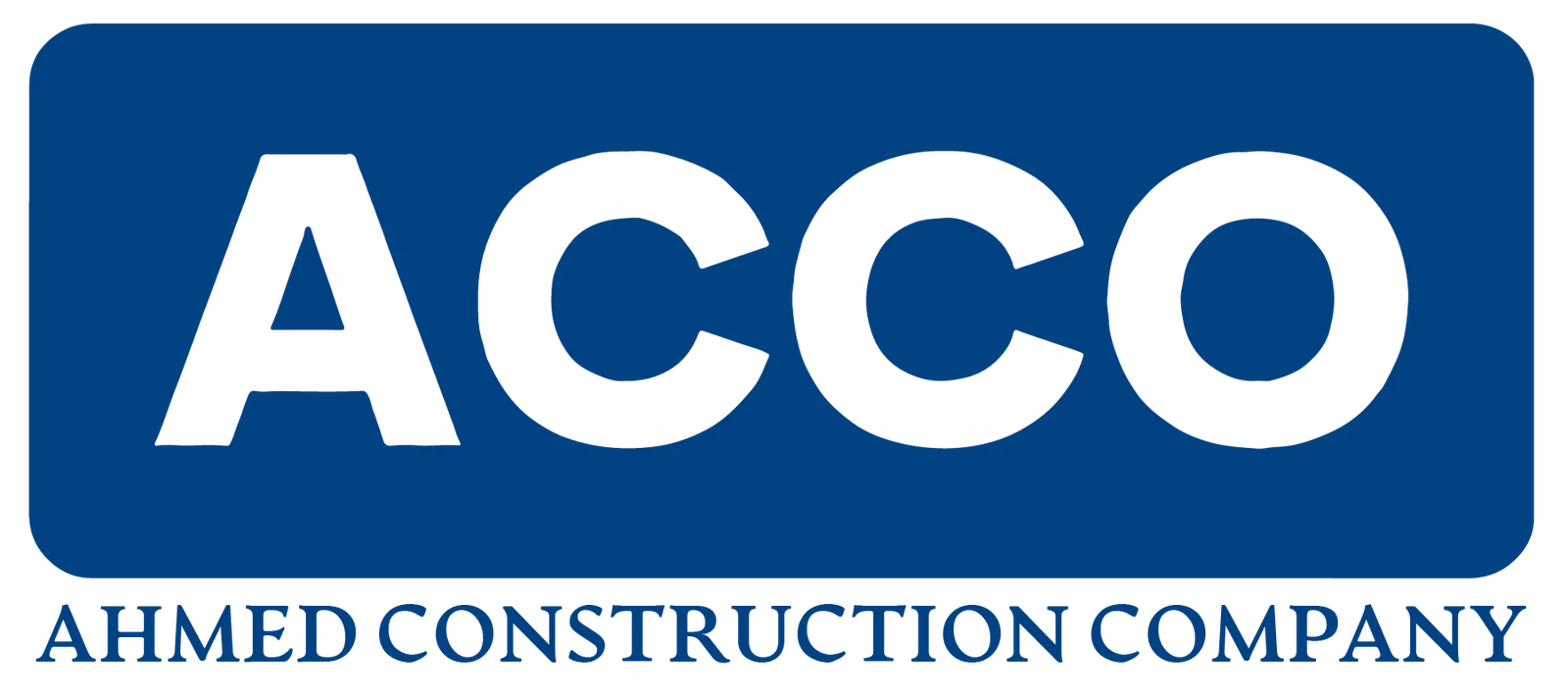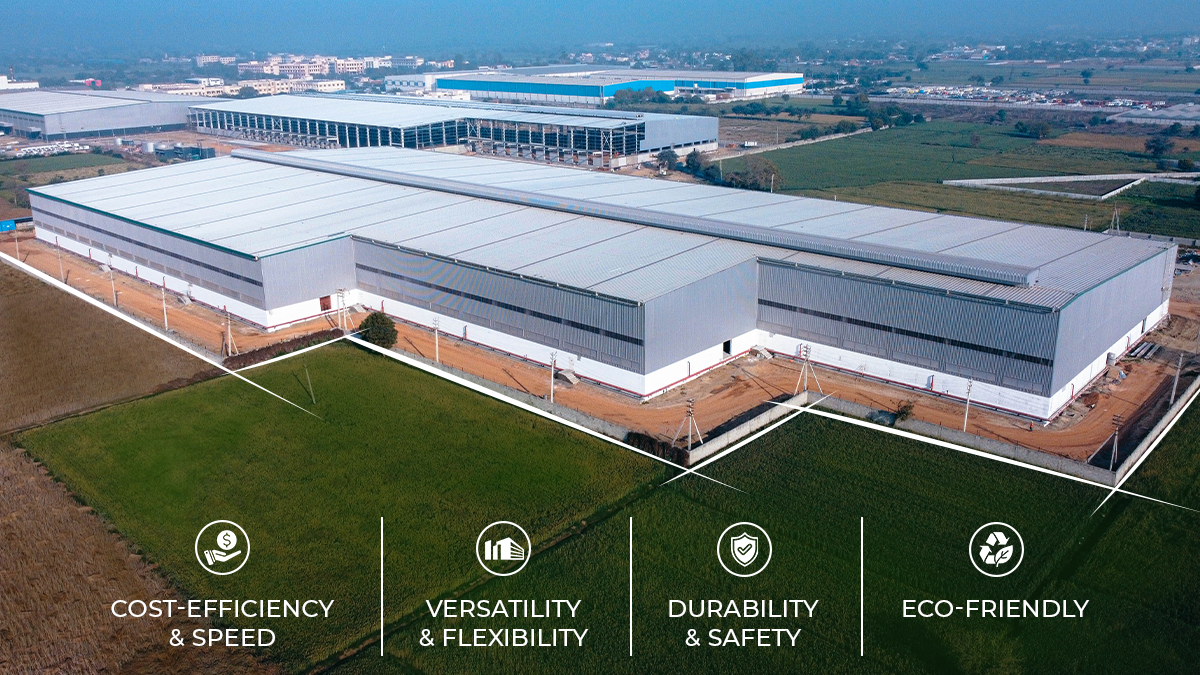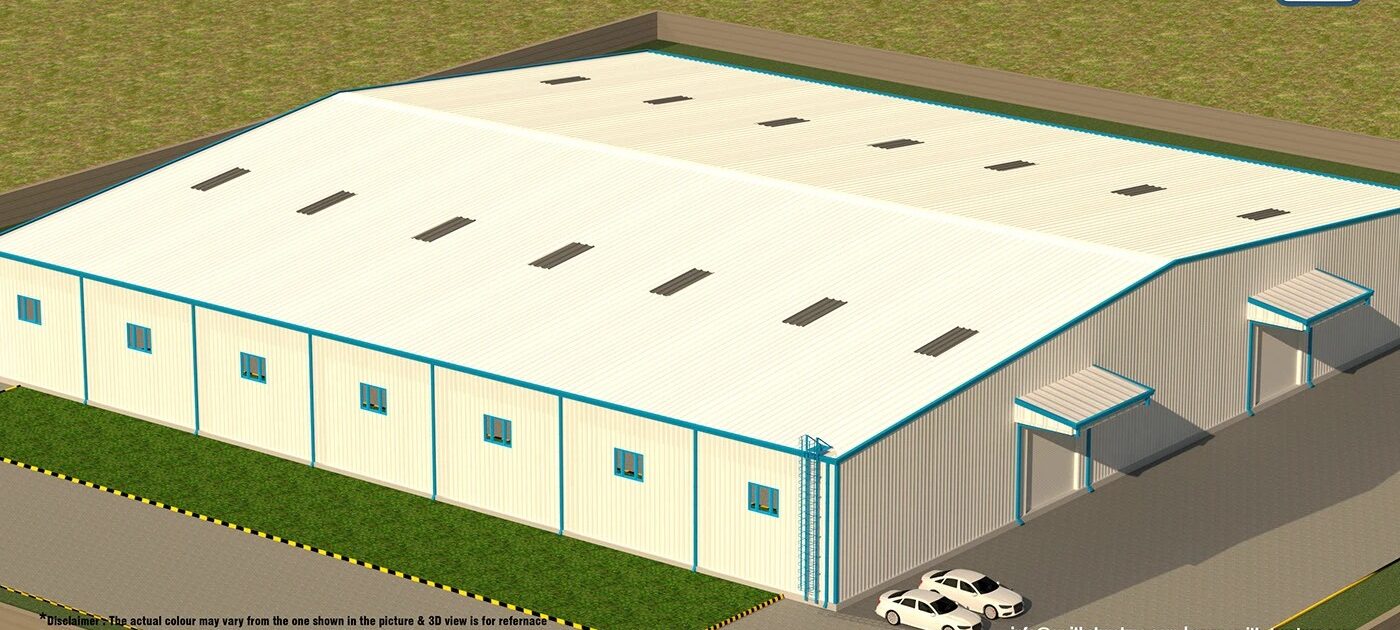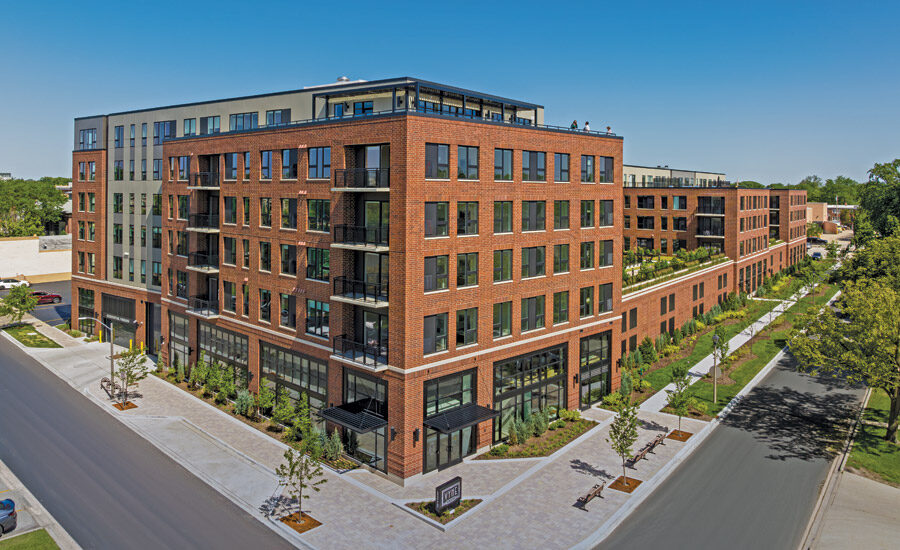
2025 Midwest Top Contractor: Wide Range of Services Helps Fuel Ryan’s Growth
[ad_1]
Founded in 1938 in Hibbing, Minn., as a lumber and coal business, Ryan Cos.—then known as Ryan Lumber and Coal—expanded in 1949 into owning, financing and managing the real estate that the coal and lumber company built.
Over the past nearly 90 years, the company has continued to evolve into a full-service firm that offers construction, architecture, engineering, real estate development and management and capital markets services.
The company’s Midwest region is a cornerstone of
Ryan’s success. Midwest revenue climbed to $198 million in 2024 from $153.9 million in 2023.

Ryan built a $6.6-million, 1-million-sq-ft distribution center for Amazon in Sioux Falls, N.D.
Rendering courtesy of Ryan Cos.
In addition to its Minnesota headquarters, the company has offices in Illinois, Iowa, Missouri, Wisconsin, Texas, Washington, Florida and Arizona.
“One of the things that makes Ryan unique is that we have a series of integrated service lines,” says Tony Barranco, Ryan’s Northern division president. “We’re known as a general contractor, but we are also a fairly large regional architect. In fact, we’re the 10th-largest architect in Minnesota.”
The company has 1,200 employees in the Midwest, not including its corporate staff. Barranco says real estate management, property management and capital markets functions are important parts of its business.
“We’re one of the largest real estate developers in the Midwest, and we manage properties throughout the country,” he says. “A significant amount of managed space is in Minnesota and Iowa. We also manage a lot of health care out of Milwaukee and Chicago.”

Ryan constructed a cardiovascular health center with comfortable interiors for Endeavor Health in Naperville, Ill.
Photo courtesy of R Josh Pabst
One-Stop Service
He says having real estate development, real estate management and capital markets functions under Ryan’s umbrella of five services, which also includes general contracting and architecture, appeals to clients who want to work soup to nuts with a company that can provide everything needed from targeting and developing a project site to financing the project and overseeing its design and construction.
The firm also keeps an eye on what’s happening in the macro economy and targets specific market sectors that are growing in popularity.
“I think a big area of growth for us as been in the evolution of the overall platform and in [addressing] a couple of key sectors,” says Barranco. “The sectors we are spending a lot of time on right now are data centers and advanced manufacturing, including food and beverage.”
He notes that more than 80% of Ryan’s business comes from existing clients, and the firm also pays close heed to its customers’ various needs.
“One of the things that makes Ryan unique is that we have a series of integrated service lines.”
—Tony Barranco, Northern Division President, Ryan Cos.
“We certainly hear from clients about where their businesses are going, what their focus is and what the [overall business] trends are,” he says. “I think [we do] a combination of paying attention to the market and then going to where clients have asked us to be.”
Brarranco says Ryan has “a very differentiated business model,” which includes addressing needs even after construction of a building is complete.
“Seventy percent of the cost of a building happens after a building is delivered,” he says. “You’ve got this big capital outlay at the beginning. But the management and operation of that building has a life of its own. Having groups like our real estate management and building services group that can be integrated at the front end [of a construction project] really differentiates us from a lot of others.”
Several projects that Ryan is developing include Pullman Crossings, a redevelopment of a large, underutilized industrial site on Chicago’s South Side; the redevelopment of the former 179-acre Thomson Reuters corporate campus in Eagan, Minn.; and Highland Bridge, a large-scale redevelopment project in St. Paul that is transforming the former Ford Motor Twin Cities Assembly Plant site into a mixed-use neighborhood with housing, retail, office space and public amenities.
In 2024, 4th and Park—a 25-story, 345-unit residential development the company designed and built—opened on the northeast corner of Fourth Street and Park Avenue in Minneapolis.
The project will be the final piece of the five-block development in a neighborhood known as East Town that was reenvisioned by the company. The area is attracting a range of uses.
“The momentum in East Town is off the charts,” Barranco says. “When we started our Downtown East project, some said that we were on the fringe of downtown. Now, surrounded by new retail, grocery, hotels and other amenities, this site is in the middle of everything.”

Ryan and investment partner Arcadia transformed a 2-acre parking lot into Eleven, a condo tower in downtown Minneapolis.
Photo courtesy of Corey Gaffer Photography
Central Role of Development
As the company moves forward, Barranco predicts development will continue to be an important focus at Ryan.
“I think that while we’ve always been known as a general contractor, and that will remain, our ability to get out and deliver a full suite of services starts with development,” Barranco says. “And it is becoming more and more important. I think what differentiates us from everyone else is our full suite of services.”
Ryan Cos. works to foster long-term relationships with its clients. One of those is with Endeavor Health, a nine-hospital system outside of Chicago.
Mark Hoffman, system director for ambulatory development at Endeavor, has worked with Ryan for about five years.
A couple projects that Ryan is currently completing for Endeavor are a master plan for the hospital system and a two-story medical office building on land that Ryan owns near the campus of Elmhurst Hospital outside of Chicago.
Ryan also was the developer, architect and builder of Endeavor Health Cardiovascular Center in Naperville, Ill., which opened in January.
“They are a one-stop shop. They can do the development aspect of a project, the design aspect and they can also construct it.”
—Mark Hoffman, System Director, Endeavor Health
Ryan’s full suite of services is “one of the things that makes them attractive to us,” Hoffman says. “They’re a one-stop shop. They can do the development aspect of a project, the design aspect and they can also construct it.”
Depending on their particular needs, Hoffman says Endeavor uses the full range of Ryan’s services or just uses them as a contractor or designer.
That’s not unusual, according to Barranco, who says “we’ve got clients that only work with us on the property management side and others that only work with the construction side. But there are others that like the easy button, and that is Ryan.”
Having access to a range of services is convenient for Hoffman because it eliminates having to deal with several providers on each project. He notes, however, that Endeavor and Ryan do not have any type of exclusivity arrangement.
“They compete on any project we have,” Hoffman says. “They’ve won projects based on a variety of different criteria—whether that be cost or flexibility or timeliness of delivery. There are a host of scenarios that have led to them working with us in various capacities.”
Hoffman says Ryan also meshes well with the team at Endeavor, keeps lines of communication open and addresses project challenges as part of a team.
“They’re problem-solvers,” he says. “It’s never an Endeavor problem or a Ryan problem. It’s an ‘us’ problem, and they help solve for those.”

Ryan has turned a former Ford Motor plant into Highland Park, a vibrant residential community in St. Paul.
Photo courtesy of Tomorrow’s Media
Ongoing Challenges
Ryan, like others in the industry, continues to face hurdles such as the uncertainty about tariffs and the potential for escalating material prices.
“I think that, with the tariff conversation, the headline impact has been greater than the actual cost impact,” Barranco says. “But we are being diligent. We are communicating often with our clients so they are aware of the risks that we are taking on as we undergo any price changes.”
He says it is important to inform clients of the potential for rising prices so they can compress their schedules and make buying decisions earlier in the process.
Labor is another challenge that Ryan is addressing.
“We are continuing to face headwinds with adequate labor within the construction industry, and we are not immune to that,” he says. “We lean on local subcontractors for the bulk of work that gets done.”
He says the company treats labor like a commodity that is in high demand. “We have to treat our workers and our subpartners like gold in order for them to keep coming back,” he says.
Looking ahead, Barranco says the company is focused on maintaining the its nearly 90-year legacy that he says is client-focused and centered around an approach that focuses on the human aspect of the relationship.
He describes making ham salad from his mother’s recipe and delivering it to a client who really likes ham salad and who had received a cancer diagnosis.
Noting that the client is doing well now, Barranco says that making that effort “is just a human moment and having that connection is really what it’s all about.”
He says continuing to build the company’s culture that values customers and continuing its legacy “takes a lot of work. It almost takes more work to maintain a business than to start one because you have a lot riding on it.”
For now the company is focused on expanding the size of its existing Midwestern offices and looking for an opportunity to eventually open a new office somewhere east of Chicago.
“I think we are going to be smart and steady with our growth. But make no mistake, we’re focused on growing the business,” Barranco says.
[ad_2]
Source link
Post a Comment
You must be logged in to post a comment.
